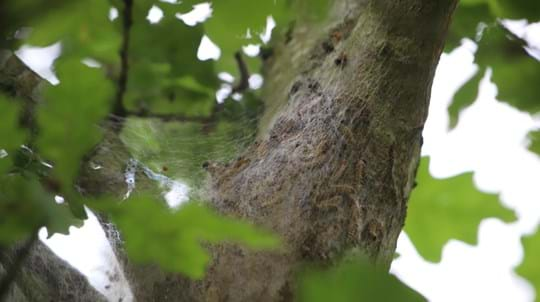
Pests and diseases
What are we looking out for?
The pests and diseases we are most keen to hear about.

DEFRA Chief Plant Health Officer
Perhaps it is ironic that during 2020, the International Year of Plant Health, a human pathogen has dominated the global headlines and had such a major impact on so many individuals, businesses, lifestyles and cultures around the world. The coronavirus has, unfortunately, demonstrated how easily some types of pathogen can be spread, the negative impacts they can cause, whilst also highlighting the importance of society’s efforts to reduce mechanisms of spread.
In parts of southern Europe, a bacterial disease called Xylella fastidiosa has killed many thousands of ancient olive trees and most of us have seen ash trees showing dead shoots, twigs and branches as a result of a fungus (Hymenoscyphus fraxineus) causing ash dieback. At a time when many countries and governments want to plant more trees to mitigate against climate change, the global economy and international trade can inadvertently help to spread tree pests or diseases around the world. Coronavirus has shown how people moving internationally can spread a disease into a new area and the same is true for the movement of plants and plant-based materials. Wood packaging materials are shipped all over the globe and can spread wood-boring pests such as the Asian longhorn beetle (Anoplophora glabripennis) from port to port. Even within the UK, tree pests and diseases can accidentally be spread.
Phytophthora ramorum is a disease that has killed many larch trees and it is easily spread from one location to another through the movement of contaminated soil. We are all now familiar with the messages about washing our hands to reduce the spread of the coronavirus, but how many of us disinfect our walking boots or bike tyres after passing through a woodland? Good biosecurity is very important and as we have all seen, everyone has a part to play in keeping unwanted pests or diseases under control.
As with Coronavirus, early identification and rapid lockdown of a new tree pest or disease within a new area are essential to maximise the chances of control and reduce the likelihood of spread. For coronavirus, a target was set of 100,000 tests a day and the introduction of technology such as ‘track and trace’ Apps to help track its spread. And Coronavirus is a single species and tests have been developed to confirm it, but people are also encouraged to look out for certain symptoms. Unfortunately, there are many tree pests and diseases threatening the UK’s trees and it is recognising the symptoms that they cause on host tree species that helps them to be identified. It is not possible to run many thousands of tests on a daily basis for so many pests or diseases. We are reliant upon visual symptoms and unhealthy trees being reported by those who have seen them and reported them to the correct authorities. Resources such as those on the Observatree website are great educational materials designed to help us recognise some of the more important ones.
It is right that we have all applauded Key Workers in recent weeks. But I, as Chief Plant Health Officer within Defra, must also applaud plant health inspectors and scientists who are in the front line, fighting to protect our trees from new pests or diseases. And projects such as Observatree form an important part of this tree health protective web. During 2019, the Observatree volunteers submitted over 4500 tree health reports from across the UK. These included significant findings of Sweet chestnut blight (Cryphonectria parasitica) and Phytophthora ramorum that led to follow-up investigations by professionals.
Some volunteers have supported tree health research by helping scientists with surveys or collecting samples. And Observatree volunteers monitor a network of Sentinel trees across the UK for changes in their health and submit regular reports on their condition. Our very own network of mobile tree health GPs who call in the specialists when necessary. Citizen scientists do have a role to play in helping to protect the UK’s trees. They can and do make a difference.
Whilst people have been under lockdown for many weeks, the potential biological threats to our trees have not. Pests and diseases continue to spread across the UK or are heading in our direction. As we continue to venture out more into the countryside, visit parks and even whilst walking city streets, we must all be vigilant of unwanted tree pests or diseases.
Please look at the pests and disease information that is available from Observatree and Forest Research, and please submit reports of unhealthy trees through Tree Alert. Don’t help them to spread and remember to avoid transporting potentially contaminated soil, water or plant materials from one place to another.